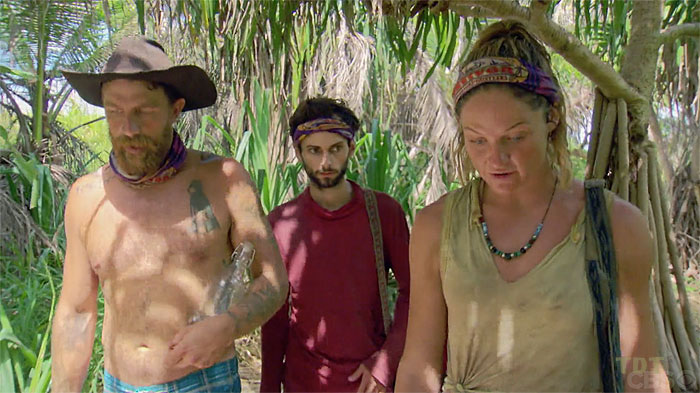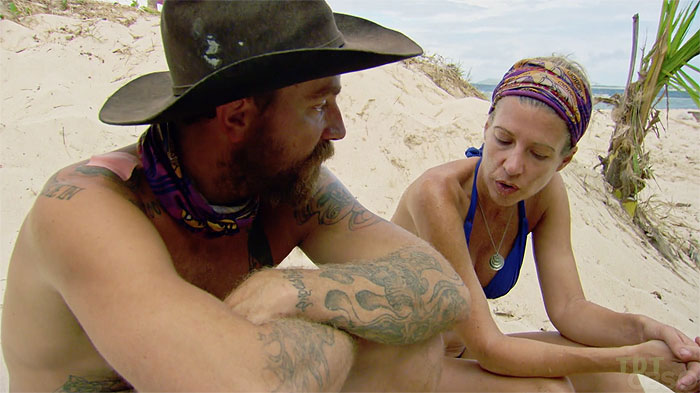

Mostly when writing this column, I apply theories often used in sociology, economics and organizational communication. This, of course, makes sense since I’m a media sociologist who mostly studies how economic models affect people working in news.
In writing classes, all professors say the same thing: Write what you know. I’m just following directions, man. But, still, as a professor in a journalism department, it might seem kind of odd that I focus on theories from other disciplines. But it’s not, really.
You see, the academic study of anything communication-related is relatively new. While people have been studying various forms of the hard sciences or philosophy or political science for far more than a century at least, communication research dates back roughly 100 years. And those of us who study the field, tend to do so from the framework of other areas. I work with political scientists, data scientists and psychologists, mainly. In general, most theories used in studies of mass communication come from other areas.
But even though we’re a relatively new field, we do have some of our own theories. And today we’re going to illustrate the difference between the great play of Chrissy versus the not-so-great play of Ben with agenda-setting theory.
Agenda setting, you see, takes us back to some of the earliest work in journalism studies. While agenda-setting research really began in the late 1960s through some seminal work by a couple of University of North Carolina scholars, many people trace the idea back to the great Walter Lippmann.
Before I describe exactly what agenda-setting theory explains, let’s talk about the hypodermic needle. You hear this theory called a lot of things, but we’ll go with the hypodermic needle, which the great Harold Lasswell introduced to the world in the late 1920s. You see, the idea behind early journalism research focused on the opinion that media have direct effects on people. Basically, these scholars and the theories they created fundamentally argued, for example, if you saw violence on television, you want to go be violent. Of course, this isn’t true. The effects of media are far more nuanced. So here comes agenda setting.
The basic, most underlying idea of agenda-setting theory is that the media doesn’t tell us how to think, but what to think about. The theory states the media gathers all this information and then decides how to shape it and then delivers it to people. We as media consumers then know what to think about, but not how to think about. Essentially, the media sets the agenda to think about, but doesn’t tell us how to think about the agenda; that’s determined by a whole lot of factors … more than we can get into here.
So what does this have to do with Survivor? Well, people also need to understand this. Nobody likes to be told what to do. And the best Survivor players never tell others how to think, but they often subtly tell them what to think about.
By far the biggest moment, the one editors wanted us to see, of the last episode happened during Ben and Chrissy’s conversation. Chrissy oh-so-nicely tells Ben others feel steamrolled by his opinion. Without any kind of self-awareness, Ben huffs, “No they don’t.” During this episode, Ben tries to communicate with others by telling them how to think. He doesn’t tell them what’s important; he just tells them what to do. That’s not effective. You can make people think what you want that way.

Remember when Chrissy wanted JP (Winner Pick™) to vote out Roark? She never tells JP what to do, to vote for Roark. Instead, Chrissy tells JP what to think about. Right? She says that Roark talked about an all-girls alliance, knowing that would make JP want Roark out. It works.
These two little anecdotes illustrate the difference between Ben and Chrissy. In the end, after this episode, I think we can see this ain’t going to end well for Ben. It’s unfortunate because Ben seems like a good dude, but he doesn’t understand how communication effects work. You simply can’t tell people what to do. Our minds don’t work that way. We don’t like to receive information in that way. If Ben simply talked about challenges and how his alliance needed to win them, he might have been able to subtly make people realize the threat of Cole.
Anyway, that’s it for theory this week. Sorry about missing last week … the amount of work preparing for Thanksgiving break took too much of my time. But I hope you all had a great holiday and we’ll talk every week until this, um, mediocre (?) season concludes.
Here’s where I think remaining players stand right now:
Solewa

- Mike – If someone can explain in the comments what the hell Mike was trying to do at tribal, please do so. I’m a pretty smart guy and I’ve watched every season of Survivor, most numerous times over. And I still can’t, for the life of me, figure out what he’s trying to accomplish. Honestly, I wonder if a lack of food made Mike delirious. Even his analogies were, um, weird. The previews give me hope for the good doctor, and he’s one of my favorites this season, but let’s hope he regains his wits.
- Chrissy – After the last episode, I thought Chrissy might become too much of a target once the alliance of seven splintered. Too many people seemed to understand the threat she posed. But, this week, that seemed to dissipate a bit. I’m not the biggest fan of some of Chrissy’s moves … she seems a bit conceited at times, the way she assumes she’s smarter than everyone. She might actually be, but it doesn’t come across well. With that said, how can you not be rooting for the person potentially playing the best game?
- Ben – I talked about Ben already, but the last two episodes, I think, are foreshadowing the demise of our favorite Marine. He’s not winning this thing. Unless he somehow trained at the altar of Boston Rob, I don’t think his strategy will work. In fact, my guess is Ben heads to Ponderosa this coming week.
- Ashley – I’m still liking Ashley’s chances. While her edit doesn’t give me that much confidence in a win, she’s playing a good game. She probably could understate her emotions a bit better (not yelling at Joe would be a start), but, she’s in a damn good spot. And as more and more physical players leave and immunity challenges start to include more than balancing, she’s going to become a top-notch physical competitor.
- JP –My Winner Pick™! What can I say? JP is a god-like competitor. I’m still dreaming of his Fabio-like run to the victory. Is it going to happen? Of course not. But a boy can dream, right? I can’t think of this off the top of my head (Fearless Leader Jeff?), but have we ever seen a goat dragged to the end with the physical amazingness of JP? He could be the first goat amazing at challenges and great around camp. That would be a complete reversal of early Survivor.
- Ryan – I think we saw the beginning of the end of Ryan this week. The edit, I think, foreshadowed Devon taking over this game. I know that sounds hilariously ridiculous, but I’m telling you: Devon is going to get Ryan and our little friend isn’t going to see it coming. That’s my current prediction.
- Devon – We’ve seen three straight episodes of Devon basically looking like the best player remaining. It’s damn weird, I know. But, what can I say? Devon is killing it. The way he communicates with people, intentional or not, is a master class in how to make people feel important while gathering tons of intel. Everyone trusts and likes Devon. Think about it: Is anyone liked and trusted by more? Nope.
- Lauren – Lauren seems to be playing a more active game lately, but this woman, sadly, has blindside written all over her. For some reason, to me, she just doesn’t seem like she’s enough in the loop at any given time. If I needed a softball player, I think I would call on Lauren’s 63 years of centerfield experience, but if I needed an alliance member, I would definitely call on Lauren. Her predictability and loyalty helps her alliance … until they no longer need her.
- Joe – In general, as I’ve mentioned, I haven’t really enjoyed this season. On paper, a lot of things have happened and there have been some surprises, but like many, it’s been lost on me. The main reason, I think, is just a boring group of players. While they all seem like great people, they’re archetypes and not people. We don’t know them … for the most part. They’re mostly less fully formed versions of former players. Ryan is like Spencer, but not as interesting (Spencer showed emotions, for example.). I’ve already mentioned JP and Fabio, but Fabio was fun. Honestly, besides Joe, Ben and to a lesser extent Chrissy, we don’t know these players. And that’s why, while I think his gameplay stinks, I’m rooting for Joe to stick around. He’s a person. I get him. I know him. This is my advice for Survivor producers next time they cast: Give us fully formed people, not archetypes.
And that’s it for this week. Let’s talk next week. Enjoy sleeping off the holiday hangover and have a great week of work.
 Pat Ferrucci started watching Survivor when Episode Two of Borneo first aired. He's seen every episode since. Besides recapping here, he'll be live-tweeting this season from the Mountain Time Zone. Why? Because nobody cares about the Mountain Time Zone except when they want to ski. Follow him @patferrucci for Survivor stuff and tweets about anything and everything that enters his feeble mind.
Pat Ferrucci started watching Survivor when Episode Two of Borneo first aired. He's seen every episode since. Besides recapping here, he'll be live-tweeting this season from the Mountain Time Zone. Why? Because nobody cares about the Mountain Time Zone except when they want to ski. Follow him @patferrucci for Survivor stuff and tweets about anything and everything that enters his feeble mind.
- S35 Well, in theory... index
- Pre-season: TDT Survivor: HHH contestant draft
- Cast: Who am I going to curse this season?
- Ep.1: Let's talk some in-group and some out-group
- Ep.2: You're a hustler. A hustler. You are. Yes you.
- Ep.3: His name was Patrick. Now it's Matthew
- Ep.4: It's all about cohesion, the cohesion of the group
- Ep.5: The ego and its utility, a tale of contradictory ethics
- Ep.6: Who holds the power at the merge?
- Ep.7: Who holds the golden fleece after the merge?
- Ep.9: Ben needs a lesson in mass communication theory... badly
- Eps.10-11: Chrissy and Ryan get lost in their own story
- Ep.12: Let's have a chat about hypocrisy
- Ep.13: Where does it all stand?
- Pre-Ep.14: Jury jeopardy - HvHvH